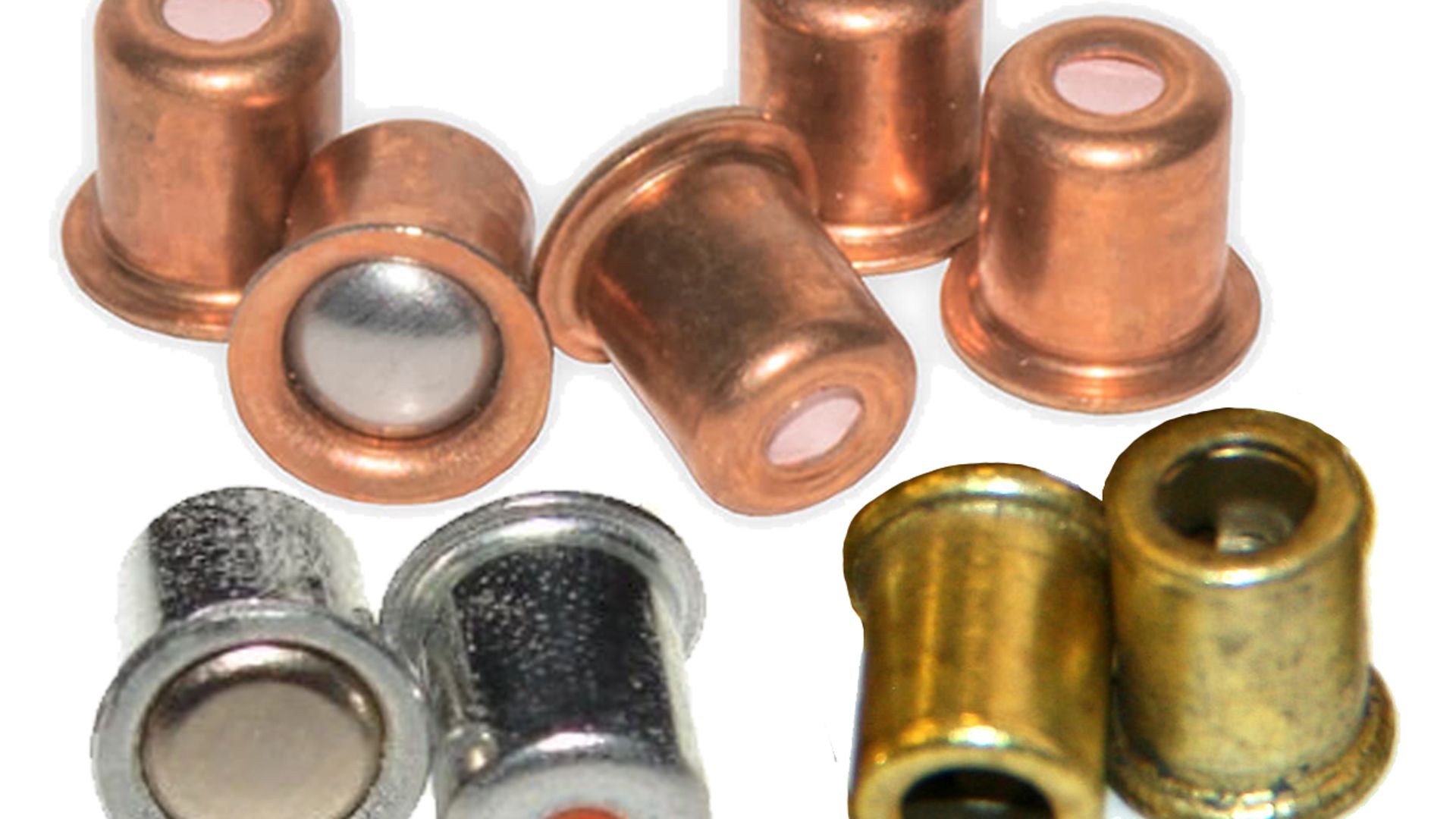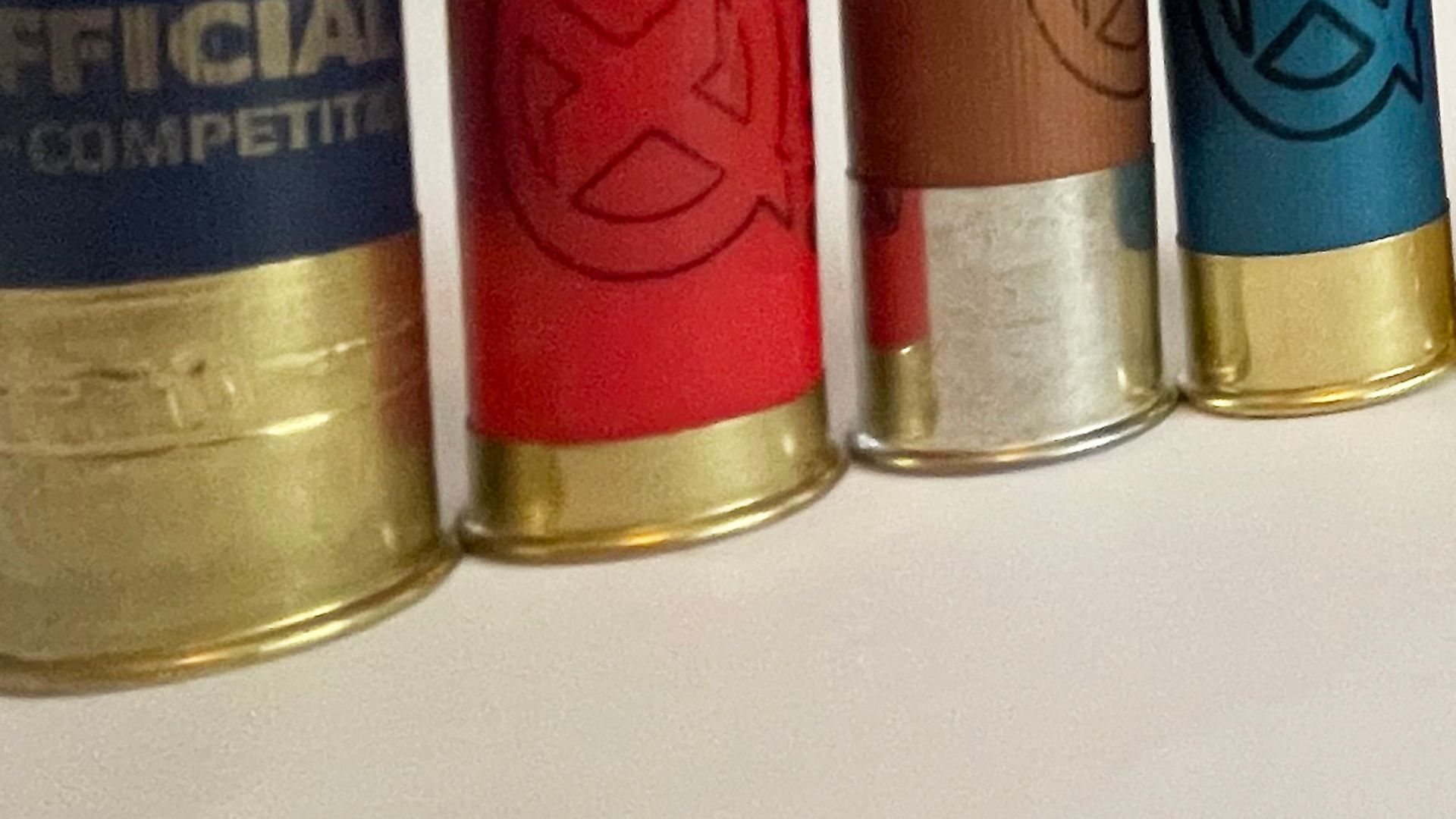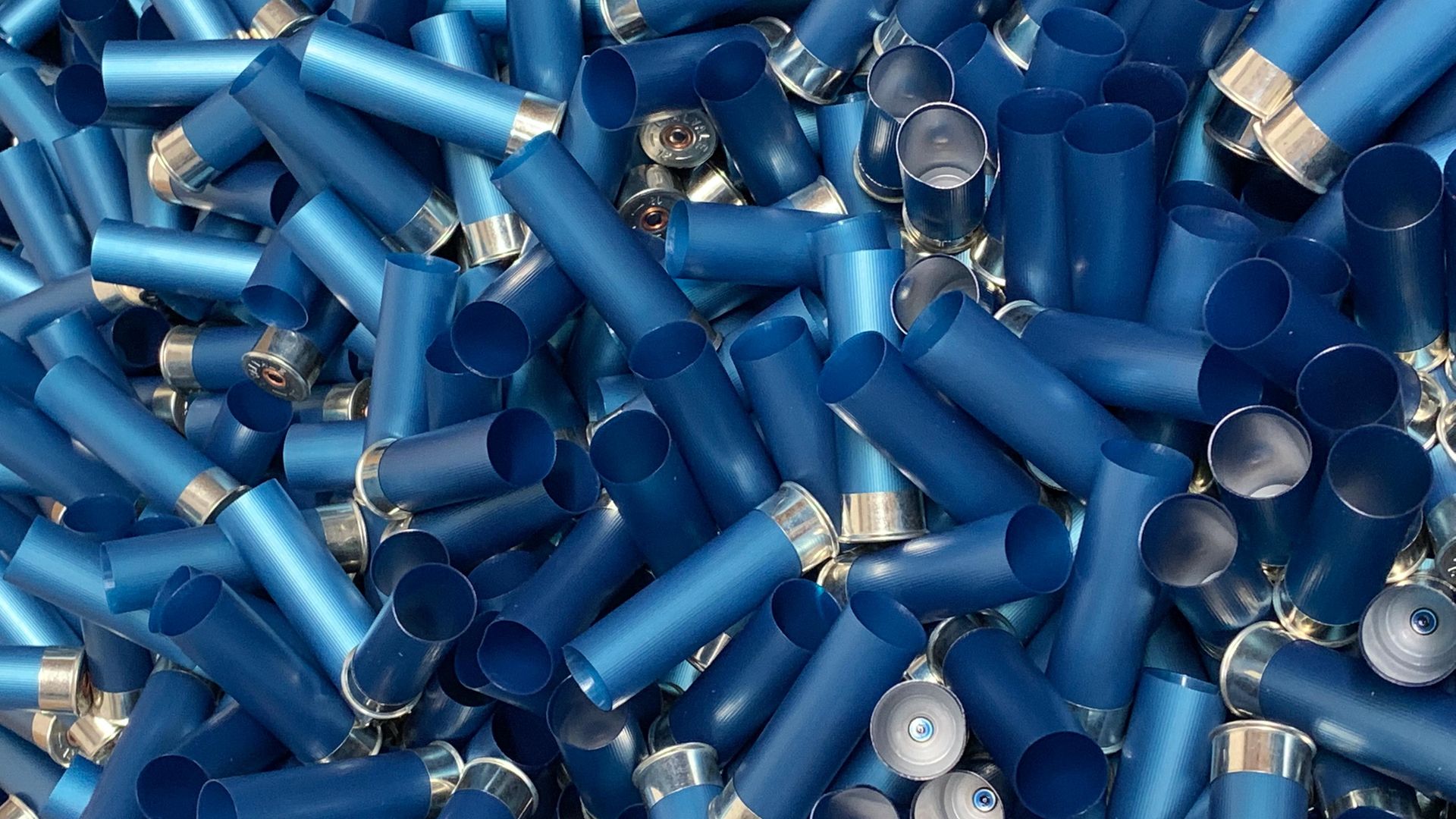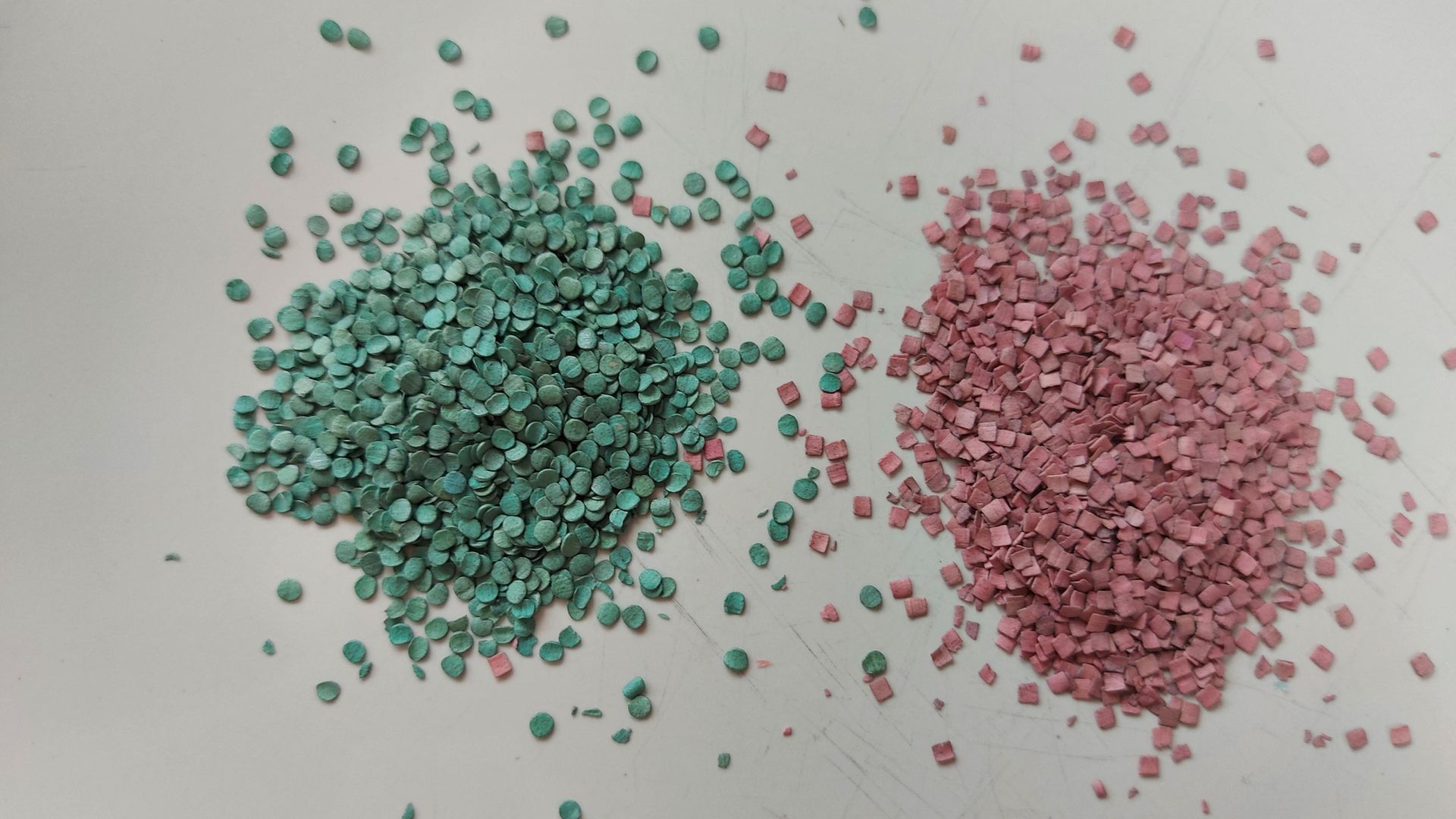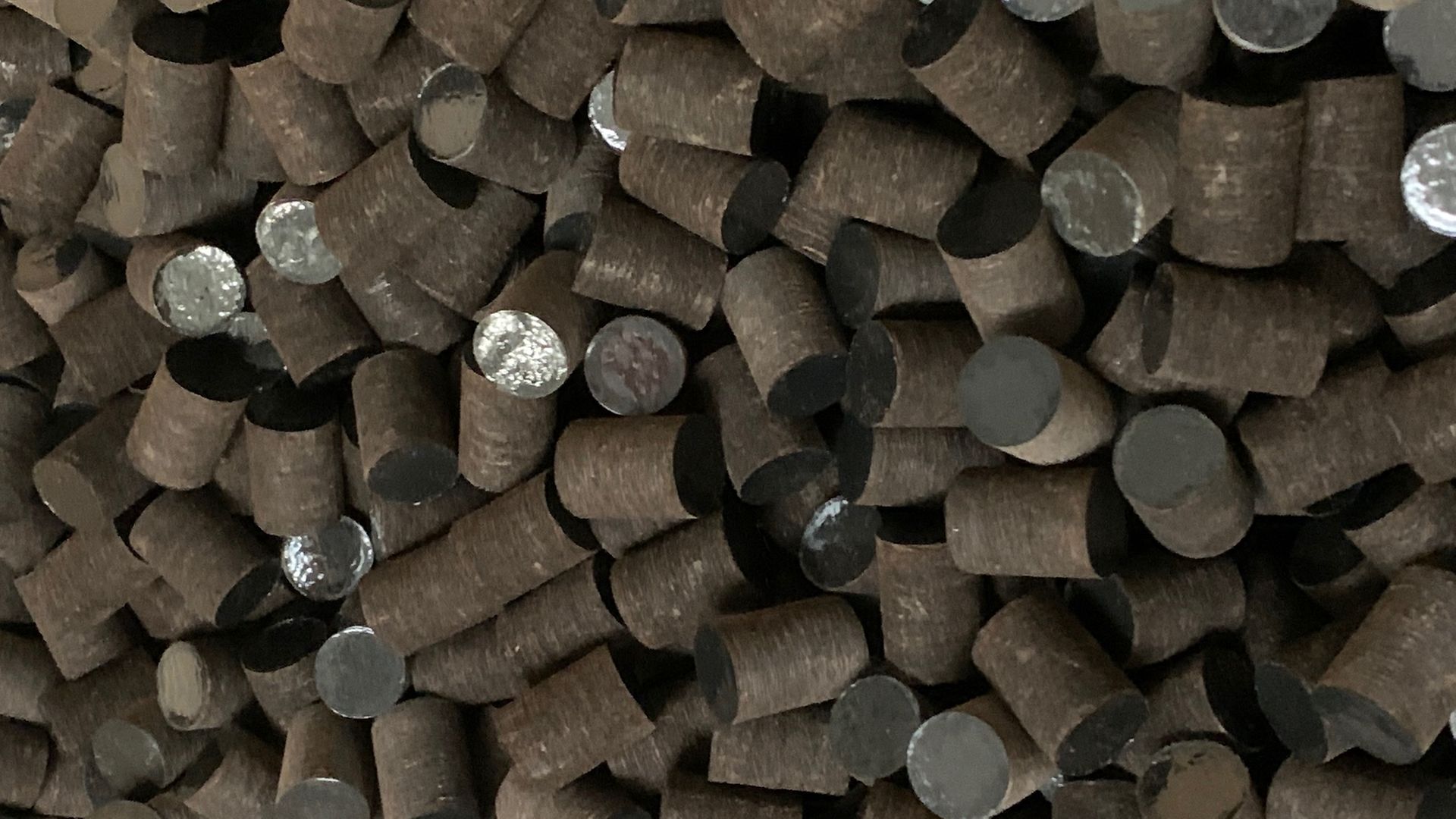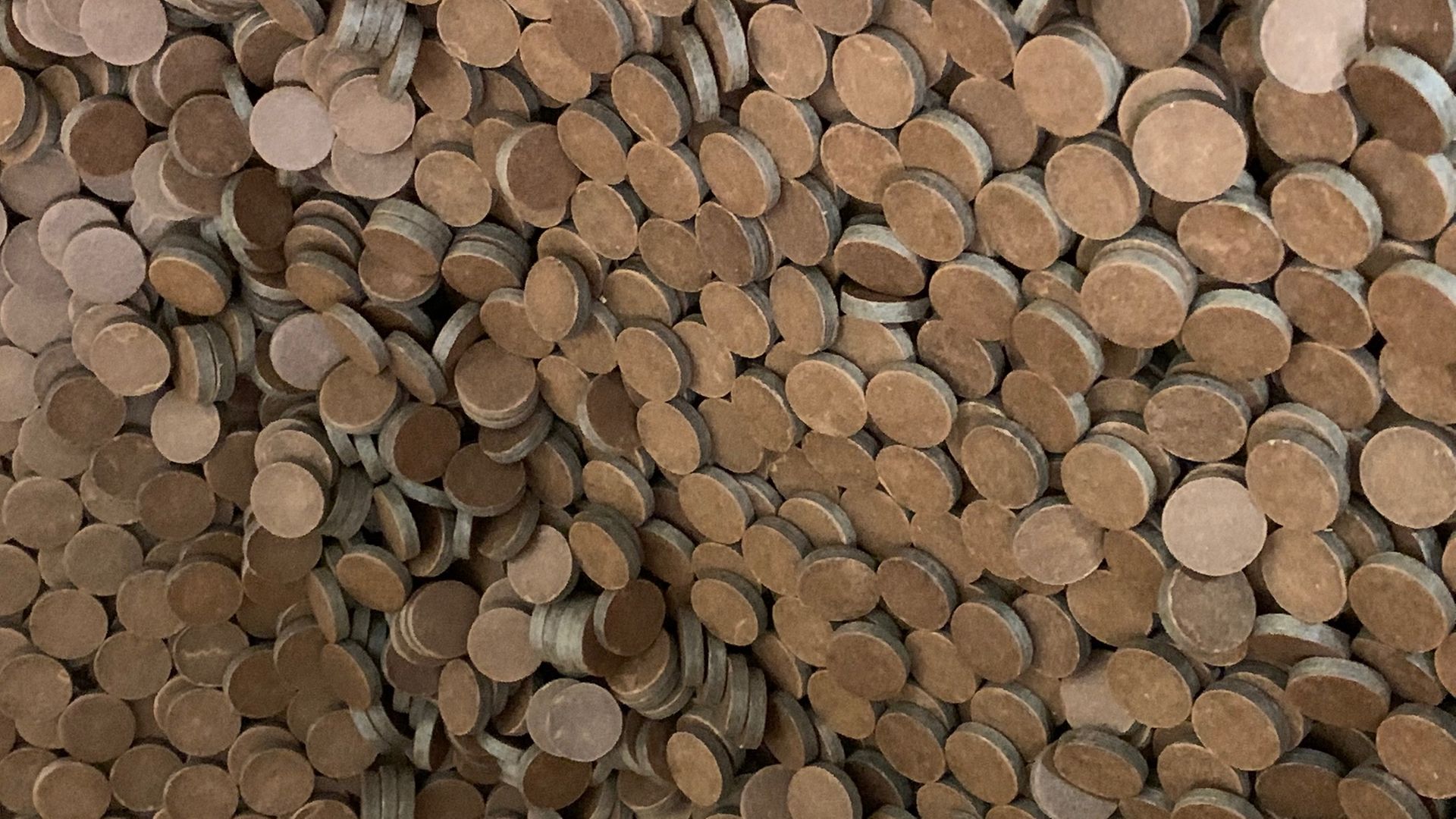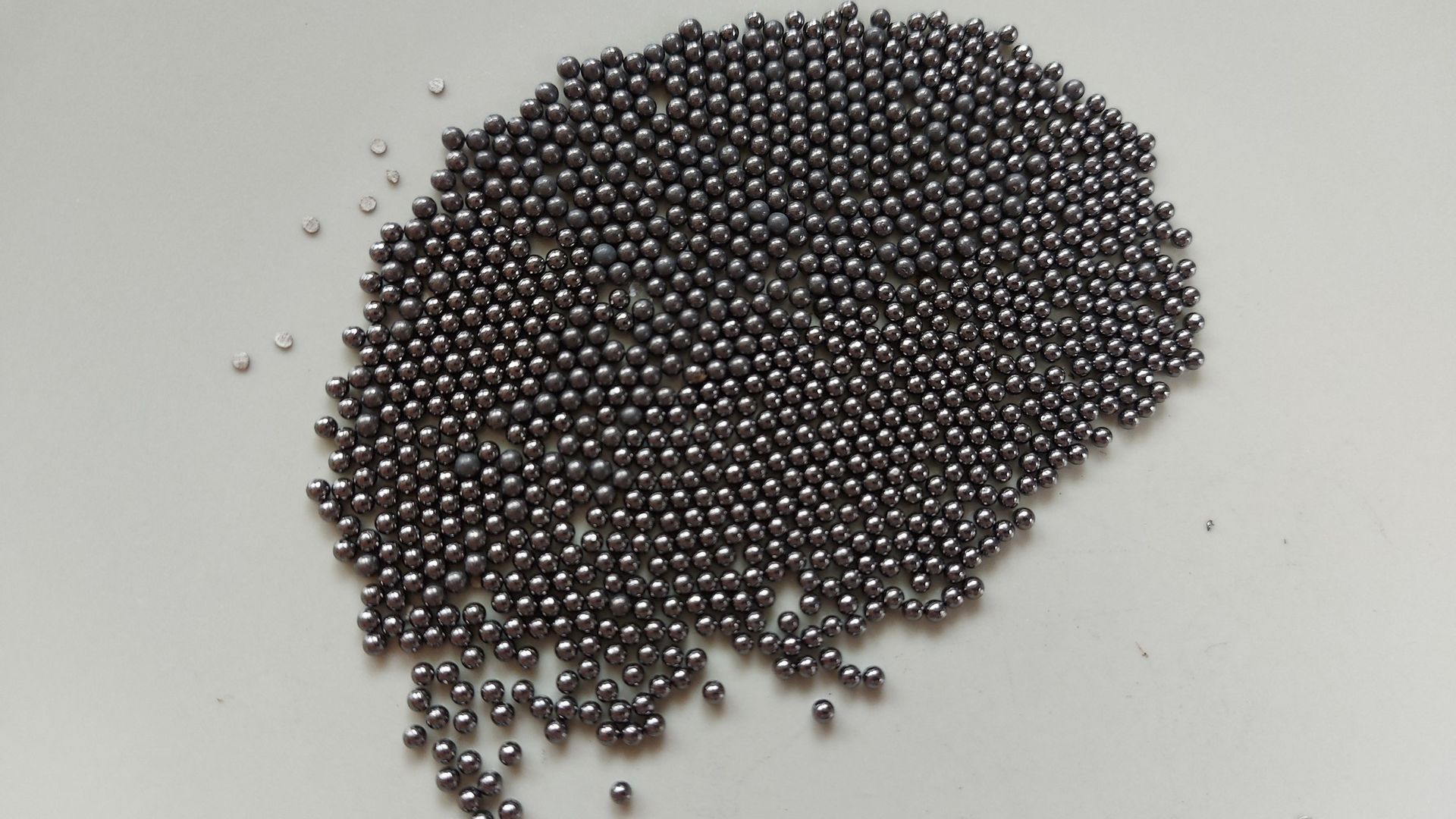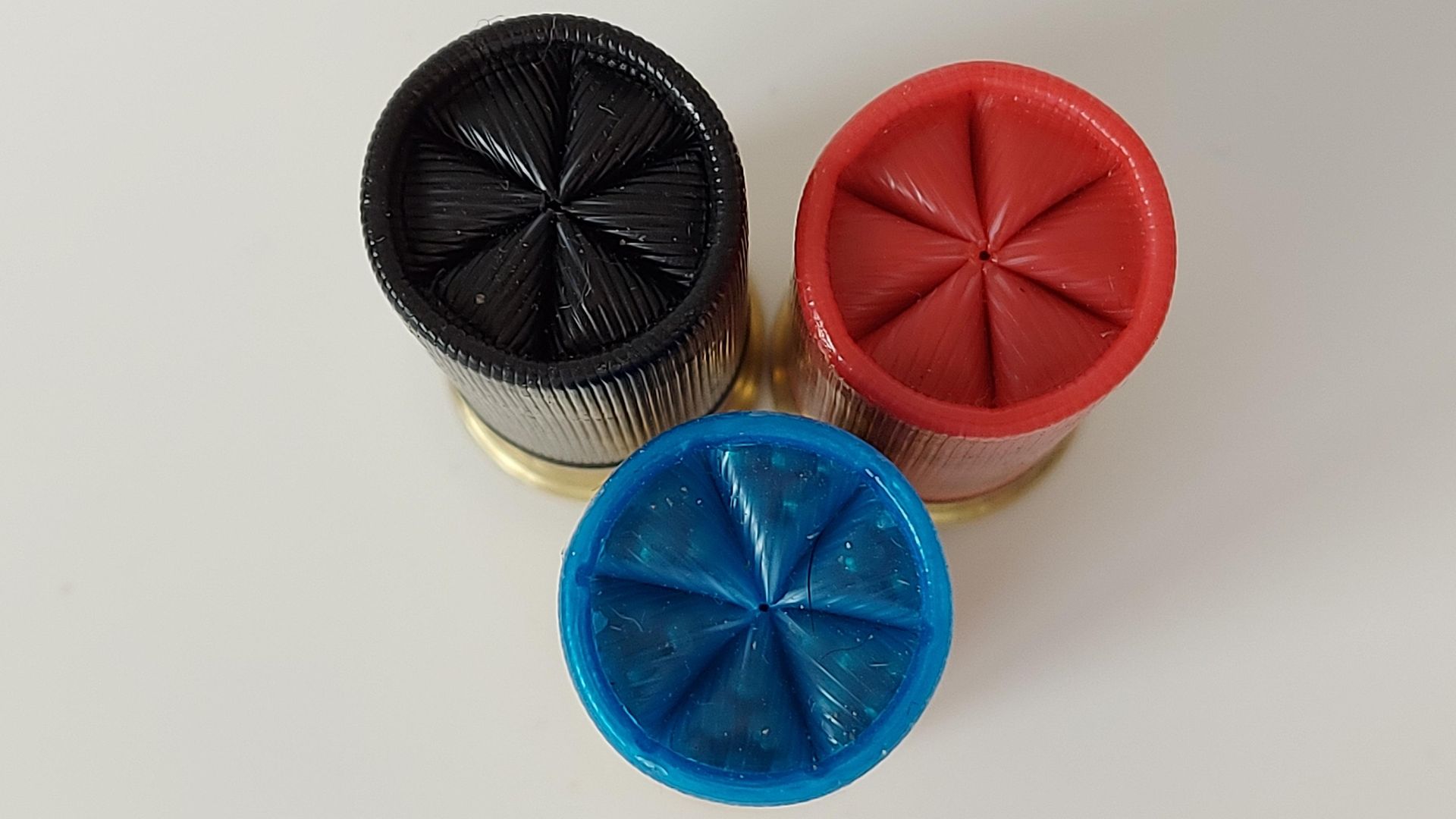What’s in a shotgun cartridge?
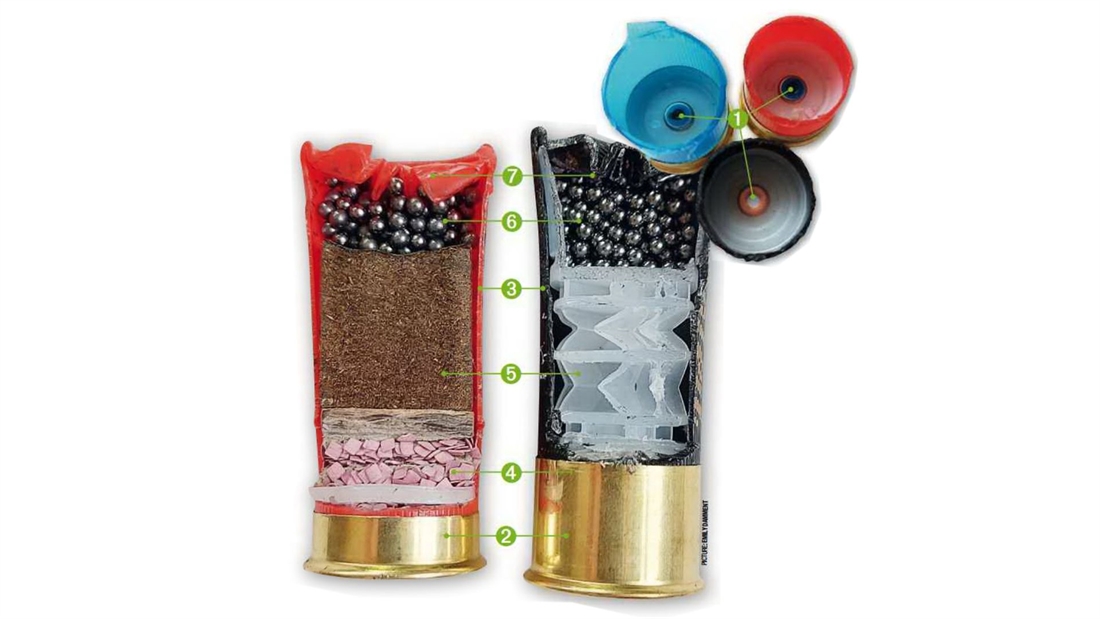
Drennan Kenderdine deconstructs a shotgun cartridge and explains what’s inside, what the different components do, and how they work together to make your gun go bang!
We shoot countless every year, but how many of us know exactly what goes into a cartridge, and how everything works together to make it fire? It’s the various components that make cartridges interesting; without each other, the cartridge is utterly useless.
There are six component parts to a cartridge:
Case: This is made from either plastic or paper
Ferrel: The base of the cartridge
Shotgun powder: The propellant
Primer: The spark that gives ignition to the powder
Wad: Made from various materials to suit different applications
Shot: A multitude of sizes and materials used
➊ Primers
So, where to begin? Simple… in the beginning, there was The Big Bang, and we all know that to get a bang, we have to have the spark. That’s all down to the primer. This relatively small yet undeniably important component hardly ever gets a mention. It should, as there’s a lot of secrecy about primers, which is a pretty closed door even to us in the trade. But in laymen’s terms, they come in various different levels of performance. These are easy to remember if you refer to them in groups organised by spiciness like an Indian food menu – mild, medium or hot.
Mild, medium and hot is precisely what their burn temperatures and rates are. Primers are also colour-coded, telling you what the primer is. The three categories are then matched to which fuels (powder) they will be igniting. Get the wrong primer with the wrong powder, and you are in for a bad performance. Hot primers are widely used in competition-grade ammo, whereas the mild is used more for game cartridges. Medium primers are able to straddle both. Just remember that this is a rather basic description, as variants and special loads do exist, creating crossovers.
➋ Ferrels
The ferrel, which some say does nothing, has its deserved place. This is what holds the primer, seats the cartridge in the chamber and holds the plastic or paper casing. Its internal base is also where the powder meets the primer, and the ferrel has a lip so that extraction can happen.
Those are all essential functions, but you will find that the length of the ferrel varies from cartridge to cartridge. This serves as nothing more than glitz; it is one of those fascinating things that many of us believe that the longer the ferrel, the better the cartridge is! The truth is, you can put the finest cartridges in the world in the shortest ferrel, and they will perform the same as they do in a long ferrel. The opposite can also be applied.
➌ Cases
Usually made from extruded plastic and cut to lengths to suit a variety of applications. On clay grounds worldwide, the most popular size is 70mm or 2¾”. There are paper case cartridges, but these are usually made for the game market and those who wish to keep old practices alive, or have old guns with short chambers.
Out of all the components, the case is simply a tube that holds and separates the internal components. However, the different colours and grades of the plastic can often determine the quality of the cartridges. If the case looks cheap, the rule of thumb will be that the cartridge will be aimed at the lower end of the market. So, flip that around, and you’ll see your higher-end cartridges.
➍ Powder
The engine and heart of any cartridge. This is the driving force of it all. There are two types of powders: Nitrocellulose, a single-based powder; and Nitrocellulose with Nitroglycerinea, a double-base powder. It all sounds a bit alchemistic, so let’s put some non-science-y explanations behind these words.
Single-based powders are fast-burning powders. They are used for high-performance cartridges and are in pretty much all clay shooting cartridges. So, this burn rate powder is designed for lighter loads, such as the most comprehensively available clay load, the 28g (or 1oz if you prefer). This powder can also do loads lighter than 28g. There are different types of this powder for various performances, separating your entry-level cartridges from your top-of-the-range cartridges. These different types are also matched to perform for other disciplines.
Slower-burning double-base powders tend to be used in heavier loads. This is what you find in your game cartridges and some overseas clay loads. This allows the burn rate to be slower, which builds up pressure to start pushing the heavier load, much like a shuttle launch – loads of power, but to lift the shuttle takes a slow lift (actually it’s a push, just as a cartridge is pushed) and a build-up of momentum.
Can you imagine the force and explosion it would take to get the shuttle from a standing start to full velocity in mere seconds? The energy and explosion would be so great that it would obliterate. The same theory would apply to your shoulder if you put the wrong burn rate powder and amount in your cartridge, and ask a heavy load to reach full velocity at the same rate as a light load. You’re going to need a chiropractor to fix your now beaten body, and a psychologist to find out what’s up with your thinking.
To help keep things simple, the powders are separated very distinctively by their appearance. Single-based powders are of a flake or disc shape and often (but definitely not always!) include different coloured flakes, depending on the mix. The double-base powders are granular and one colour.
➎ Wad
Wads come in plastic, fibre, biodegradable materials, composites; there’s just a list that goes on and on. Wads are the most underrated part of a cartridge, and yet probably the most important. You can have the best primer, powder and shot, and a case with a ferrel jazzed up to the nines, but if the wad you are using is not up to par, your cartridge with all its magnificent ingredients is doomed.
The general consensus is that the wad separates the shot from the powder, and when the powder has ignited, the wad then pushes the shot out. That’s all very true. But there’s one aspect of the wad, be it plastic, fibre or any other material, that never gets mentioned, and that is the obturator.
The what, I hear you cry. Let me explain (and if you’ve shot both fibre and plastic wads, this will make sense to you). If you have shot plastic wads, your cartridge has probably never sounded like it’s got flatulence; unlike when you’ve tried fibre, and get that dreaded wet fart sound. That sound is the gas escaping from the seal of the wad, AKA ‘the obturator’. A clear indicator of why plastic wads, at the time of writing this, will perform better than fibre wads is simply because the obturator section or skirt can make a better seal by being able to flex better. Better seal = better performance.
On plastic wads, the shot is held in a cup. This cup often has what’s referred to as petals or leaves. These don’t just hold the shot; they have a job in how the shot patterns once it has left the gun. You will have wads that control the pattern for longer – for example, Trap cartridges. Then you will have, for example, BIOR wads which are designed for closer targets so the pattern opens up quicker. When it comes to Sporting cartridges, there are many wads available to suit the application you require.
Fibre wads, despite the technology available even today, don’t behave as well as plastic wads. First off, they don’t have the same sealing qualities as plastic wads from the obturator. If you get a wet fart sound, the cartridge underperforms; if the gun sounds ok when fired, you will most likely feel more recoil from it than its twin of the plastic variety. This is because in order to make a tight seal, the wad has to be compressed, and the material it is made from is about as flexible as a surfboard. That is why, when you’ve shot fibre wads that perform well, the markings in the barrel are more significant than those made by plastic wad cartridges; because of the amount of compression that’s taken place to make a good gas seal. Plastic performs better, whereas fibre is better for the environment.
➏ Shot
It’s the stuff that does the killing; there’s no question about that, whether it’s clays or quarry. And there’s a host of variations from the size to its ingredients. Lead, by far, is the most popular material used at present. With all its myths, fears and controversies, steel is gaining more popularity, and whether you like it or not, it is soon going to be the material of choice (albeit forced choice).
Lead is made from either drop-formed or die-pressed methods. Drop form uses the universe’s most powerful engine (gravity) while die formed are stamped into shape. Although it’s called lead shot, it does have another ingredient added to it called antinomy. Antimony is a metal element used to increase the hardness of lead shot. We often see competition cartridges loaded with 5% antimony, whereas game cartridges generally have 2% or 3%. Both these figures can change, but the above is a good benchmark. The idea of hardness being more for clay targets is to increase the breaking capabilities. On the other hand, game loads have softer shot so they can deform easier, dissipating more energy to achieve humane kills.
There are also different coatings that can be applied to the shot, such as nickel, copper, graphite, or even bronze from one manufacturer, a process which is used in their bullet technology.
➐ Crimps and rolled turnovers
Crimping or role turnovers are what secure the components inside the case. Roll turnovers are really for larger shot sizes where it isn’t possible to crimp close, for example, AAA and SG shot (really big stuff!). Although they are also used where a large shot column is present in a short case, for example in 2″ cartridges and 410s etc.
Star crimps come in six and eight stars. Six is the most widely popular but eight star is still found, the opinion of six versus eight being that eight is better on top-end cartridges. In all honesty, I couldn’t then and can’t now tell the difference when shooting them. They say you find eight star on top-end cartridges, but if you look at the last 30 years plus of British shooters both here at home and abroad, I can pretty much guarantee all the wins have been done using six-star crimped cartridges.
So, more goes into cartridges than most think or believe. It’s a science all on its own – a never-ending mix and match of elements and components to make the perfect shell.




